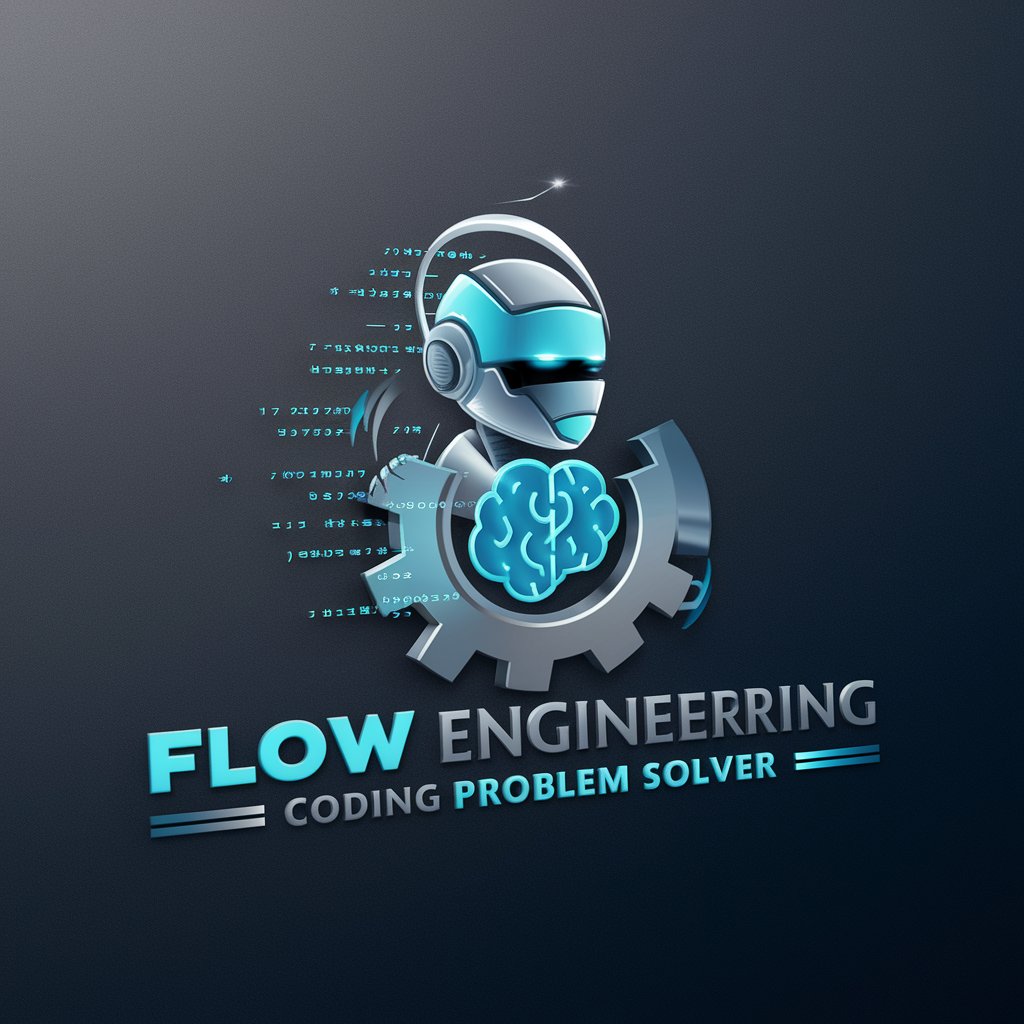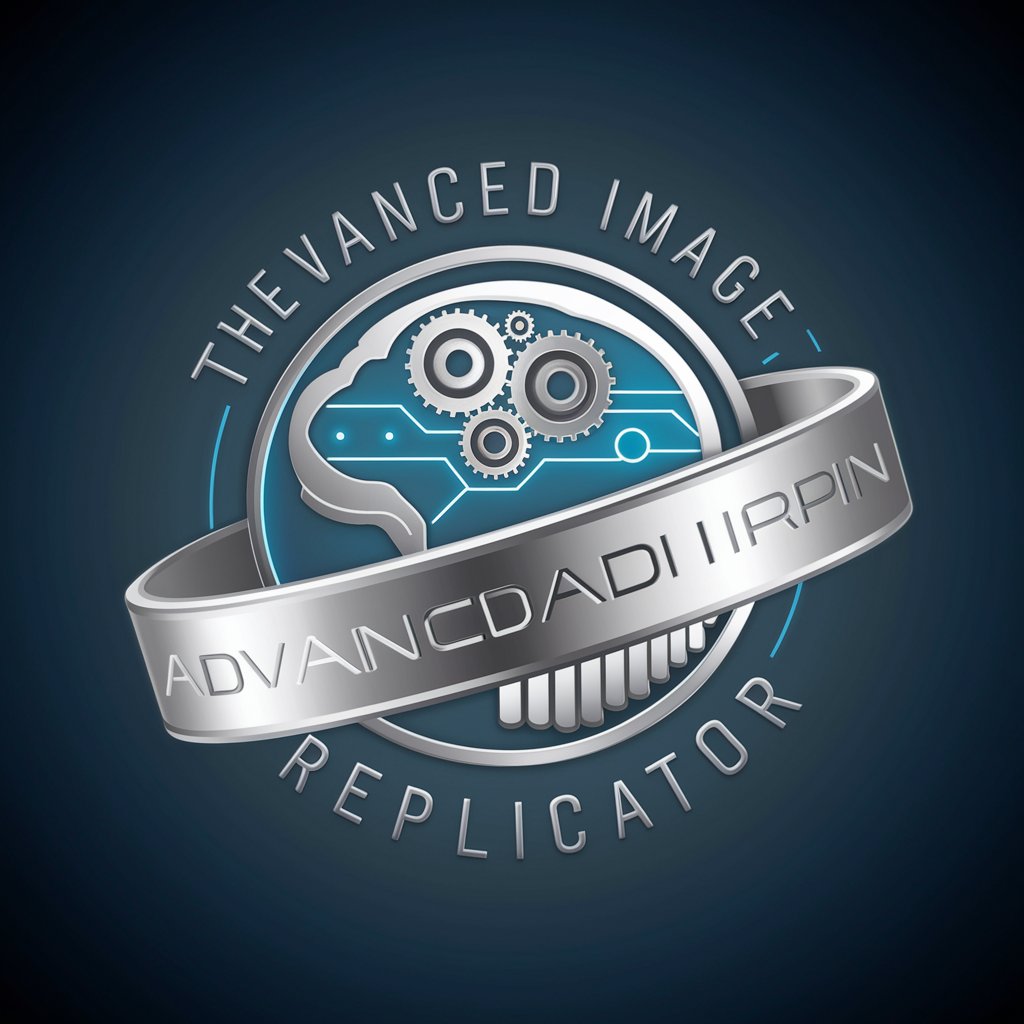Flow Engineering Coding Problem Solver - Coding Problem Solver

Hello! I'm here to help you solve your coding problems step by step.
AI-powered coding guidance and problem-solving.
Design a logo that embodies the essence of an AI coding instructor,
Create a visual representation of an AI tool for software engineering problem-solving,
Generate a logo for a sophisticated AI assistant skilled in coding and logic,
Design a professional and modern logo for an AI expert in software engineering,
Get Embed Code
Introduction to Flow Engineering Coding Problem Solver
The Flow Engineering Coding Problem Solver is a specialized AI tool designed to assist users in solving complex coding problems, particularly in the domain of software engineering. Its purpose is to streamline the process of coding problem resolution by providing step-by-step guidance, from understanding the problem statement to crafting and refining the code solution. The Solver leverages a structured workflow, incorporating logical analysis and programming expertise across various programming languages. For example, in a scenario where a developer is struggling with implementing an efficient sorting algorithm that meets specific space and time constraints, the Solver would guide the developer through framing the problem, exploring multiple solutions, selecting the optimal one, and iteratively refining the code based on tests. Powered by ChatGPT-4o。

Main Functions of Flow Engineering Coding Problem Solver
Problem Reflection
Example
A user submits a problem about optimizing database queries in a web application.
Scenario
The Solver prompts the user to describe the problem in detail, including inputs, outputs, and constraints. This ensures a mutual understanding before proceeding to solution exploration.
Generate Possible Solutions
Example
Considering a challenge in designing a responsive UI layout.
Scenario
The Solver suggests several approaches, like CSS Flexbox, Grid Layout, or Bootstrap, and discusses their advantages and disadvantages with the user.
Rank Solutions and Select Best
Example
Choosing between RESTful services and GraphQL for a new API.
Scenario
After listing possible solutions, the Solver helps the user evaluate each based on performance, scalability, and ease of implementation, guiding them towards the best choice.
Generate Additional AI Tests
Example
Developing a new feature for an e-commerce platform that suggests products.
Scenario
The Solver creates diverse input-output tests to ensure the feature works under various scenarios, enhancing reliability before deployment.
Initial Code Solution and Iteration
Example
Creating a custom algorithm for real-time data processing in an IoT application.
Scenario
The Solver drafts initial code, tests it against provided and AI-generated cases, and iteratively refines the solution for optimal performance.
Ideal Users of Flow Engineering Coding Problem Solver Services
Software Developers and Engineers
Individuals or teams working on software projects who encounter specific coding challenges or seek to optimize their code. They benefit from tailored problem-solving advice and coding guidance.
Computer Science Students
Learners who are mastering programming languages and algorithms can use the Solver to enhance their understanding of complex concepts and improve their coding skills through practical application.
Technical Project Managers
Managers overseeing software development projects who need to ensure that coding solutions are both efficient and effective. The Solver can assist in evaluating technical options and decision-making.

How to Use Flow Engineering Coding Problem Solver
1
Start by visiting yeschat.ai for a no-login, free trial experience, ensuring an accessible entry without the need for ChatGPT Plus.
2
Outline your coding problem in detail, including goals, inputs, outputs, constraints, and any specific rules or requirements.
3
Select the 'Flow Engineering Coding Problem Solver' tool from the available options to specifically address your coding challenges.
4
Engage with the tool by following the structured workflow for problem-solving, which includes problem reflection, solution generation, and code iteration.
5
Utilize the feedback and iteration capabilities to refine your solution, leveraging the AI's expertise in software engineering and coding instruction.
Try other advanced and practical GPTs
AI新規取引アドバイザー
Empowering New Transactions with AI

Name Finder
Discover the perfect name with AI

career article
Empowering Your Career Journey with AI

Wafer Size & NetDie Calculator
Maximize wafer yield with AI precision

Mysterious Species Chat
Converse with the unknown, powered by AI

Plato
Empowering thought through ancient wisdom

Street Drug
Decoding Street Drugs with AI

Gogh Portrait
Transform your photos into Van Gogh masterpieces.

Admission Strategist (MBA)
Elevate your MBA application with AI-powered insights.

Advanced Image Replicator
Replicate and Innovate with AI

Interstellar Dawn
Craft Your Space Legacy with AI

成語接龍 GPT
Master idioms with AI-powered solitaire

Flow Engineering Coding Problem Solver FAQs
What types of coding problems can Flow Engineering Coding Problem Solver address?
This tool is versatile in addressing a wide range of coding problems, from algorithmic challenges and data structures to specific programming tasks in languages like Python, Java, and C++. It's designed to tackle both educational and practical coding problems.
How does the tool handle complex coding issues?
The tool uses a structured workflow that breaks down complex issues into manageable steps. This approach ensures thorough understanding and solution development, enhanced by AI's capability to generate test cases and debug code iteratively.
Can beginners use this tool effectively?
Absolutely. The tool is designed to assist users of all skill levels, providing detailed explanations and step-by-step guidance that can help beginners understand coding concepts and improve their problem-solving skills.
Is there a limit to how often I can use this tool?
No, there's no limit. Users can engage with the tool as often as needed, making it a valuable resource for continuous learning and coding practice.
How does this tool differ from other coding help tools?
What sets this tool apart is its AI-powered, interactive problem-solving process that's specifically tailored for coding challenges. It not only helps in coding but also in understanding the rationale behind solutions, fostering deeper learning.
